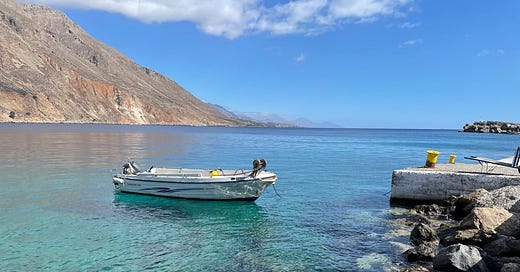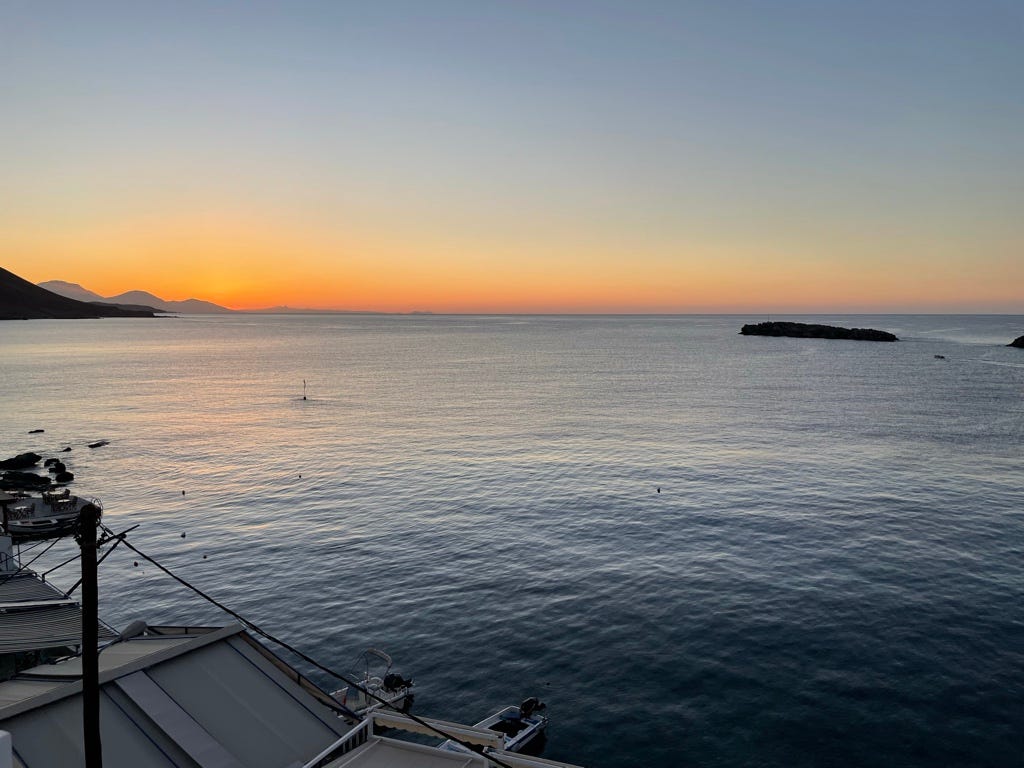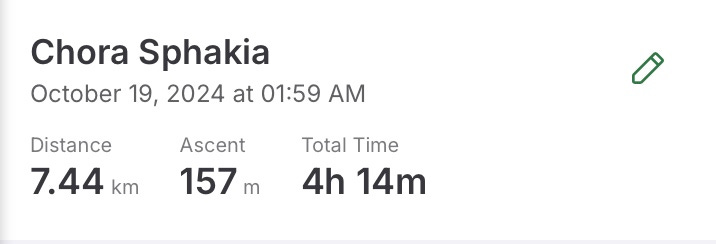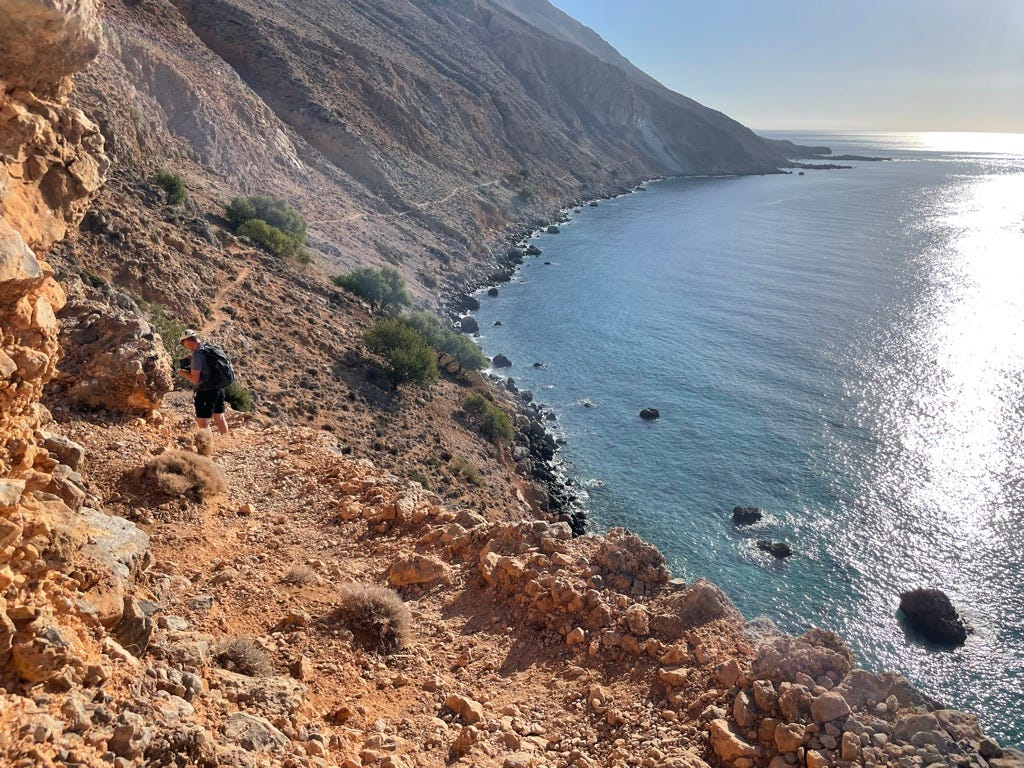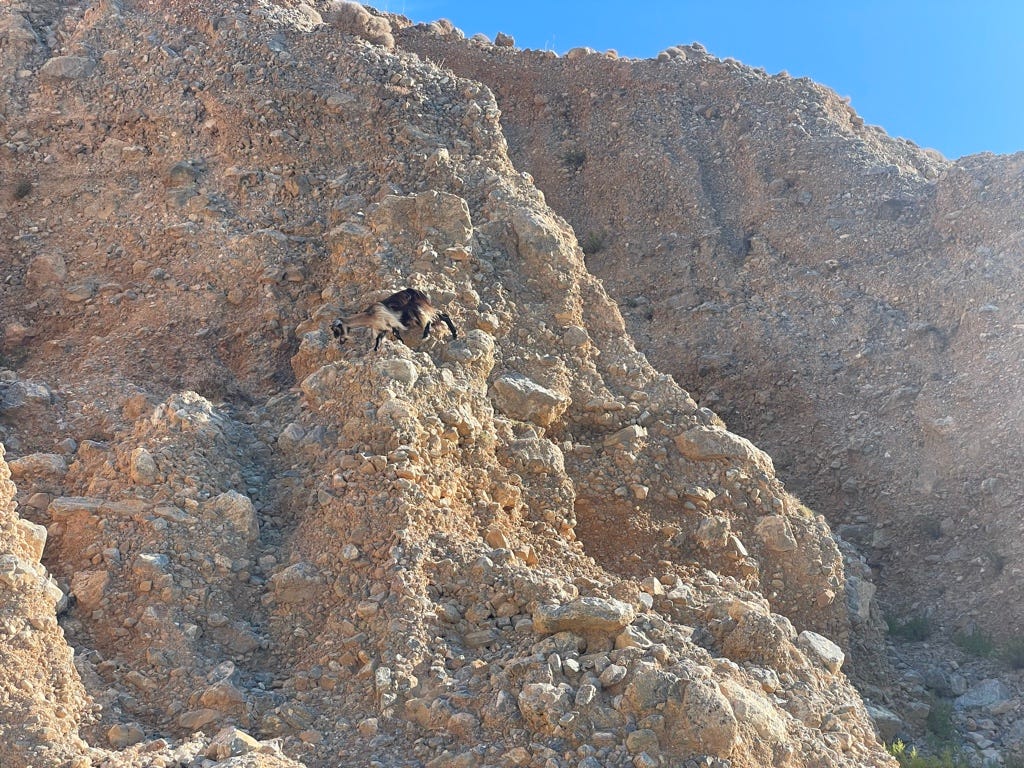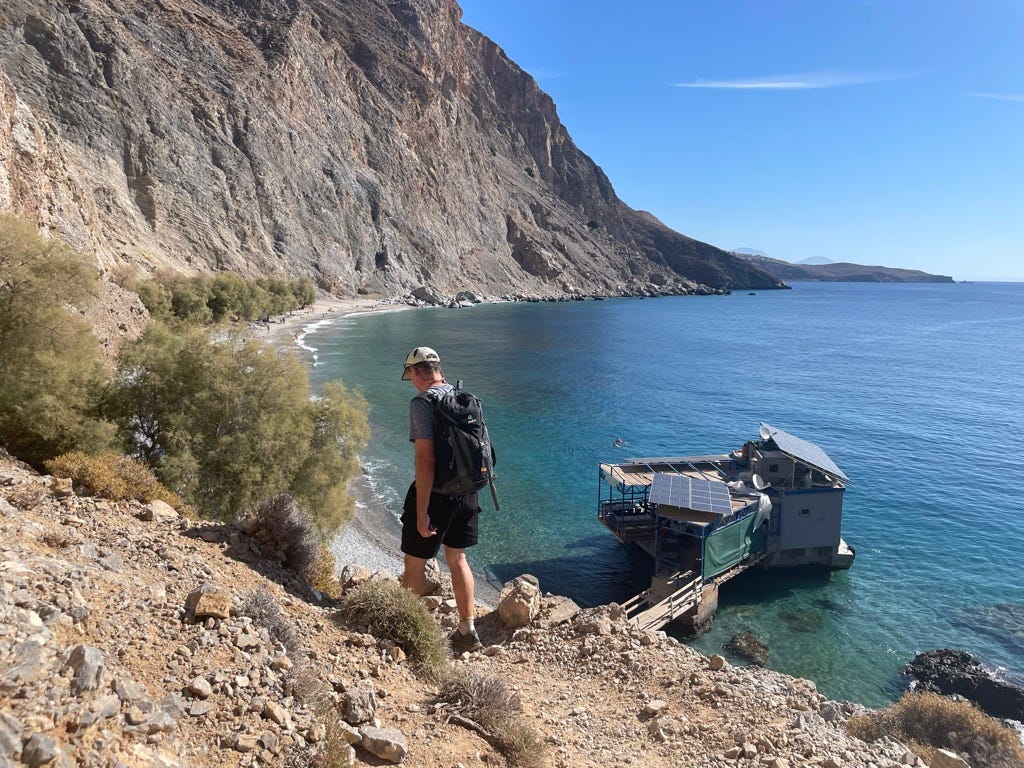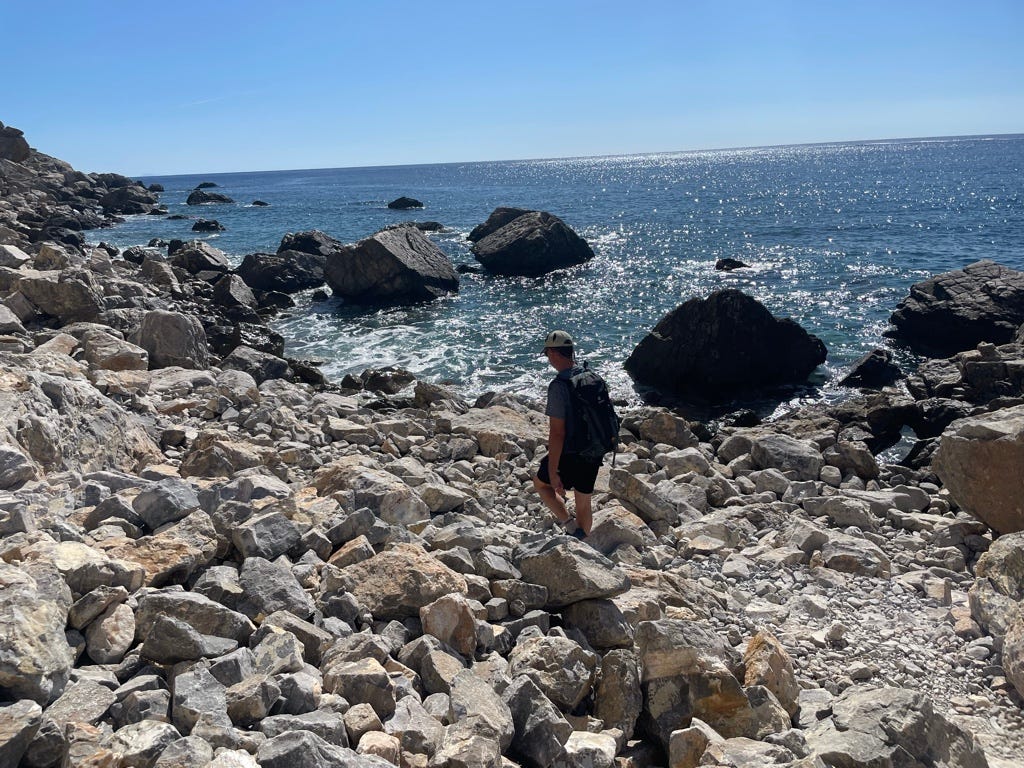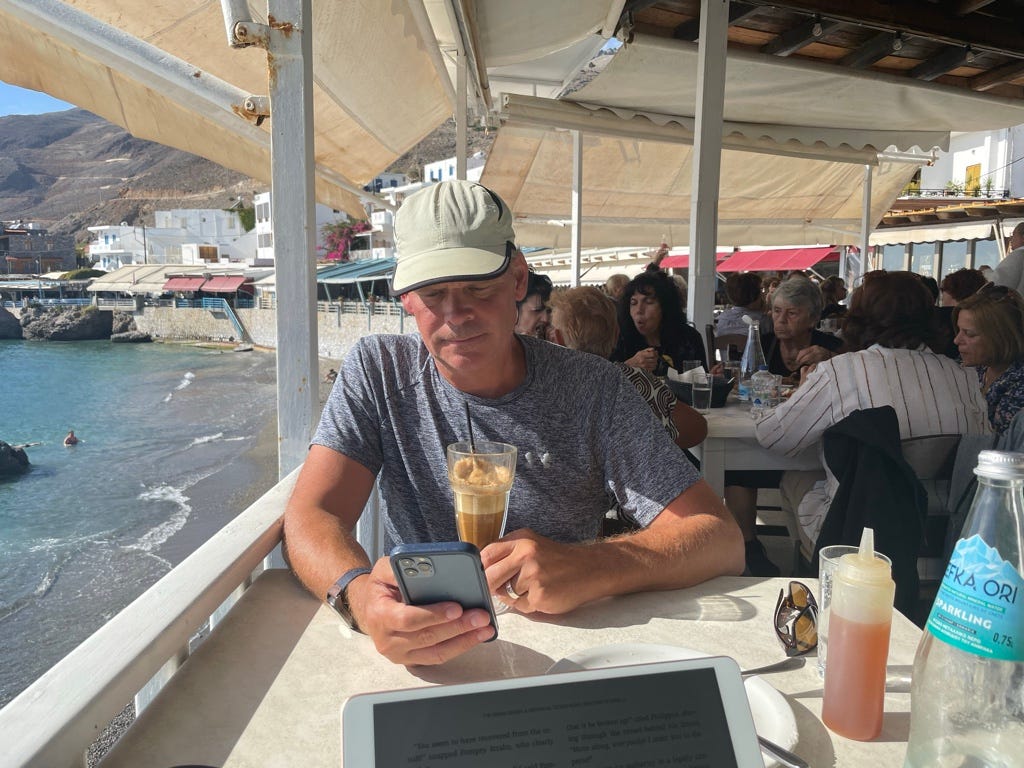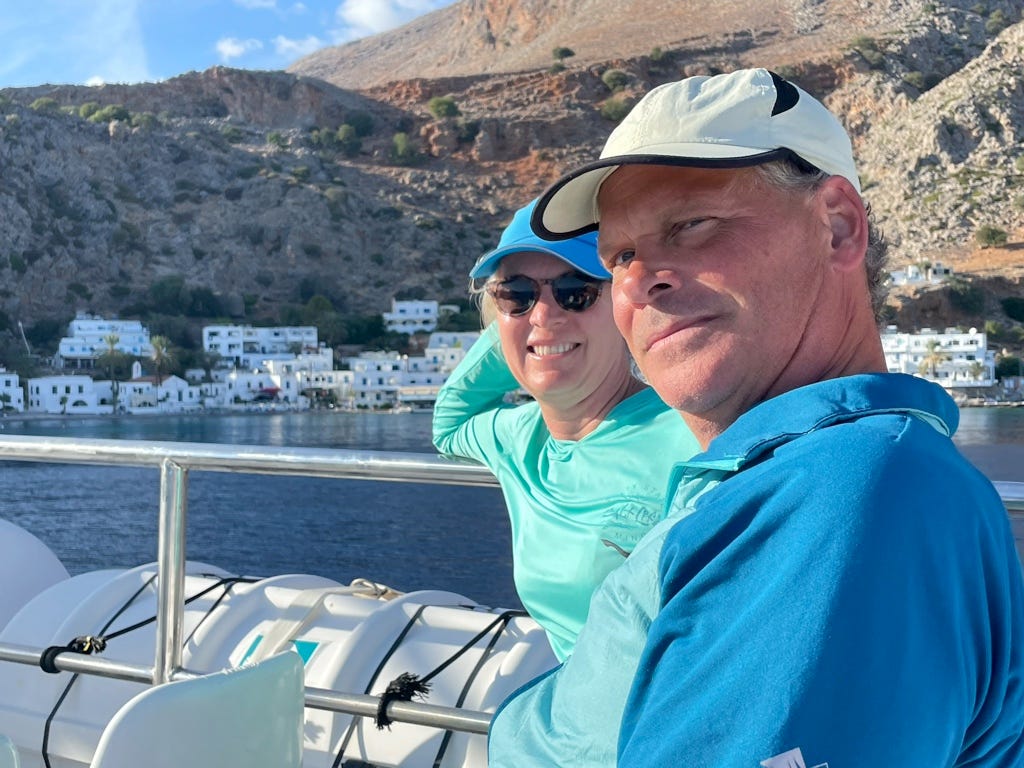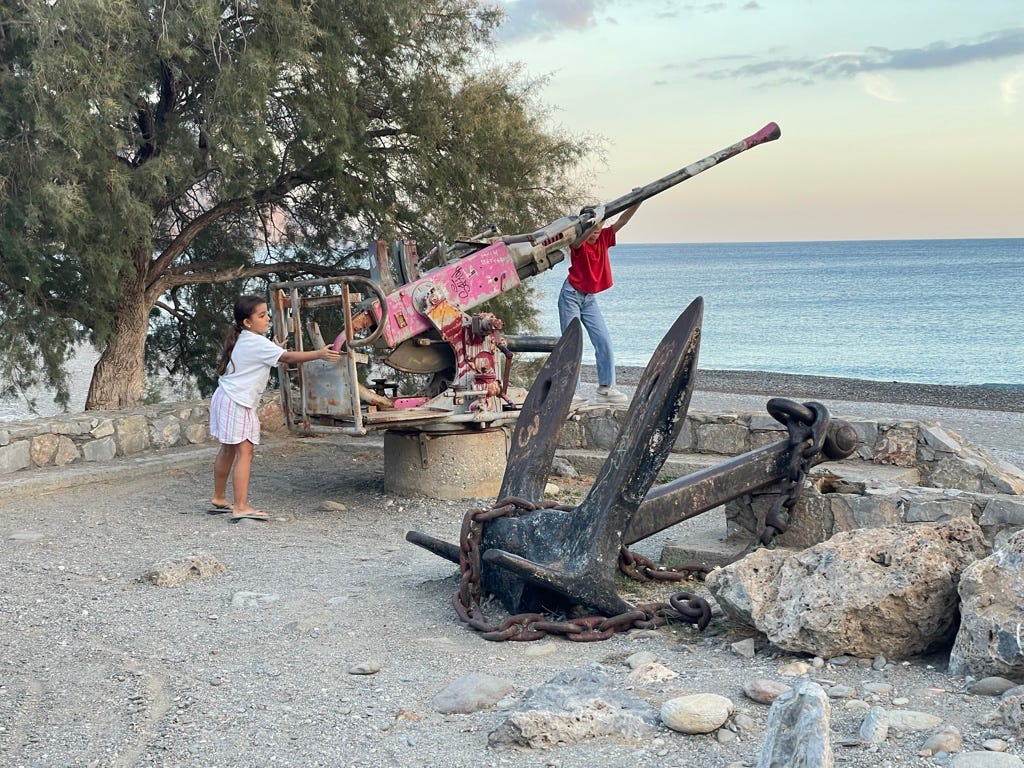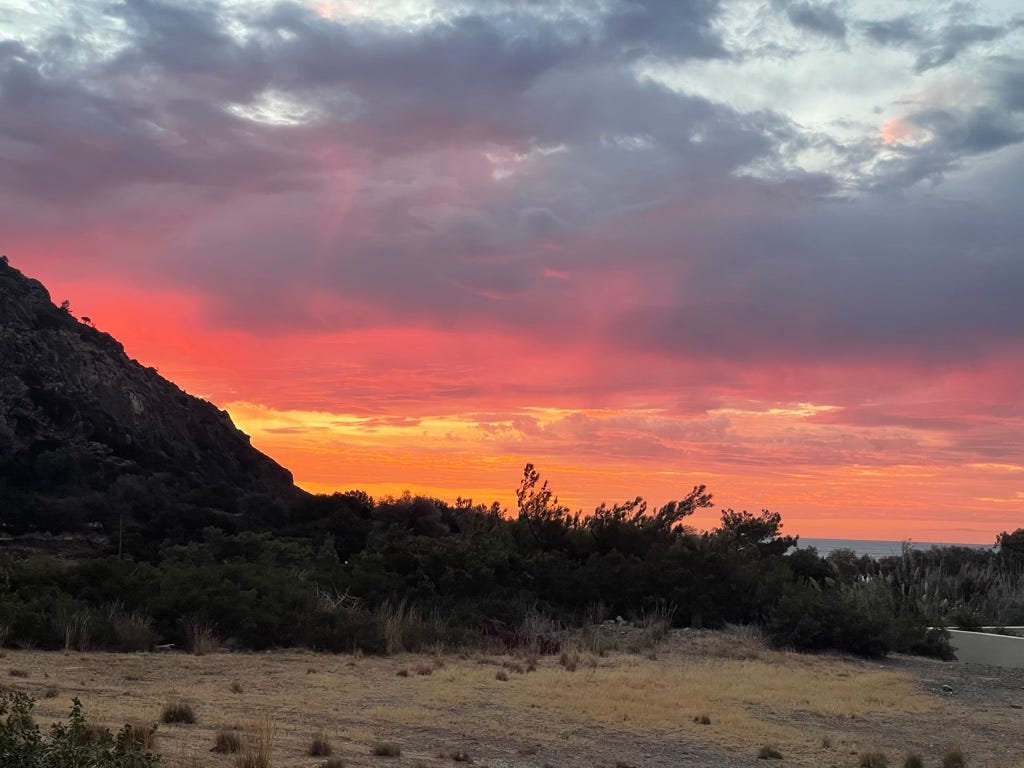This post is too long for email. To read the whole article, click on the title.
Crete White Mountains. October 18–19: Loutro–Chora Sfakia–Sougia
October 18: Loutro
Today was a rest day. And we rested!
Loutro is the perfect place to do nothing, because there is basically nothing to do.
Chris slept off his cold. I took a quick dip in the surprisingly cold water; cold freshwater springs enter the sea in this area, making the water cool and clear. We walked up and down the town, which takes about five minutes.
We could see much of our next hike from the dock.
The ferry docking at Loutro
Loutro from the sea
We watched two movies. First, we watched Caddyshack, which I now realize doesn’t have an actual plot. It’s mostly just set pieces that hang together more or less effectively. Then, inspired by Rodney Dangerfield’s performance, we watched Back to School, which is surprisingly strong. He really was a comedic genius.
And rest time is almost over.
October 19: Loutro–Chora Sfakion–Sougia
The hike to Chora Sfakia.
Stats for the hike.
This morning we had to scramble. It was the ferry situation again.
This was the last day of our White Mountains trek. We were going to walk to Chora Sfakion and then catch the afternoon ferry back east to Sougia, where we’d start the Coastal Trek. Our bags were scheduled to go to Chora Sfakion. We would pick them up there and then haul them to Sougia with us.
We were sitting at breakfast, enjoying a leisurely morning, when the proprietor informed us that he needed our suitcases in ten minutes. He was going to load them onto his own little boat, to drdive them across the tiny harbor and put them on the morning ferry.
Okay then! We dashed upstairs, flung all our things into our bags, and got them down in time. And then we figured we might as well head out.
Leaving Loutro, heading east to Chora Sfakion.
The trail follows the cliffside.
It was another sunny day.
We saw goats.
We descended (precipitously) to the famous Glyka Nera Beach, aka Sweetwater Beach, so named because of the proponderance of cold freshwater that comes from undergound springs right into the sea. This is a well-known nude beach.
Descending to the famous floating taverna. You can’t see the nude people, but there are many in the distance.
The trail past Glyka Nera is very rocky.
The last part of this trail (or the trailhead if you hike west from Chora Sfakion) is notorious for frightening people who are scared of heights. That would include me….
It gets steep and exposed here.
Look down and see why I was scared!
But that was the end of it–when we were through the scary bit, we were also done with the actual trail. All that was left was a long walk down the paved road into Chora Sfakion.
We got into town around 1:00, ideal time to find a seaside taverna at which to while away a long blue Saturday afternoon. We had been given directions to a cantina where we might hope to collect our suitcases. “Cantina” is the word for a really, really tiny snack bar. We didn’t really need the directions, since as we walked along the main road toward the ferry-dock, we saw our bags sitting on the side of the road. Chris paid the young lady at the nearby cantina €5 or something like that, as we had been instructed. It is not clear that she knew that our bags had been delivered to her care, or why she was getting €5. All set, we picked a likely taverna for a long lunch.
What people do in Chora Sfakion.
We finally sampled the famous Sfakia ni pita, which Kyriakis had recommended to us back in Chania. It is… a cheese quesadilla. With honey.
Worth walking all the way to Chora Sfakion?
It was vitally important that we not miss our ferry. We were supposed to start hiking from Sougia the next morning, where we would meet our guide Yannis. (Trekking Hellas gave us a guide for our last two days gratis. We are eternally grateful to them for hooking us up with Yannis!) If we missed the boat in Chora Sfakion, we would have to find some other way of traveling 90 minutes west, which might be impossible but more likely would just be expensive (probably a car could be arranged; maybe a boat).
To avoid messing this up, we were at the ferry port a good 20 minutes early. The big ferry port. What we didn’t know was that the boat we were taking wasn’t the big ferry we’d seen earlier, but a more petite vessel. And it didn’t dock at the big ferry port. It sailed right past us into the smaller harbor down the hill.
But! We hadn’t been walking for the past seven weeks straight for nothing! We sprinted down the road leading to the smaller dock and jumped on our actual ferry with minutes to spare. We even got seats up top.
The top deck of the little ferry from Chora Sfakion to Agia Roumeli.
This particular boat stopped in Loutro and Marmara and then ended in Agia Roumeli. We had to change to a much bigger car ferry there.
We dearly love revisiting routes after the fact, and this ferry ride was particularly effective for showcasing the terrain we’d traversed.
A partial explanation of why there are no roads and very few trails on the south coast of Crete.
Return to Loutro (briefly).
Did we really walk this? Where is the trail?
Coming into Agia Roumeli, we could see the opening of the Samaria Gorge.
In Agia Roumeli, we were herded off our little ferry and herded on to the much bigger one parked at the dock for our continuing journey to Sougia. We used the voyage to scout out the trail Trekking Hellas says no one hikes because it’s too dangerous. A guide on our boat was describing the route to another customer and concurred that it wasn’t suitable. “You go up!” was her main description. Later, our guide Yannis described his own experience hiking that section, which was sufficiently terrifying (even for a strong professional mountain guide) that he never repeated it.
This is the start of the trail west from Agia Roumeli. Not to my taste at all!
It’s not clear where anyone would walk here.
We disembarked in Sougia around sunset. There we spent a quiet evening, our last one on our own. Tomorrow we would meet up with Yannis, our guide for the next two days.
The big gun in Sougia, popular with men and children.
Sunset in Sougia

